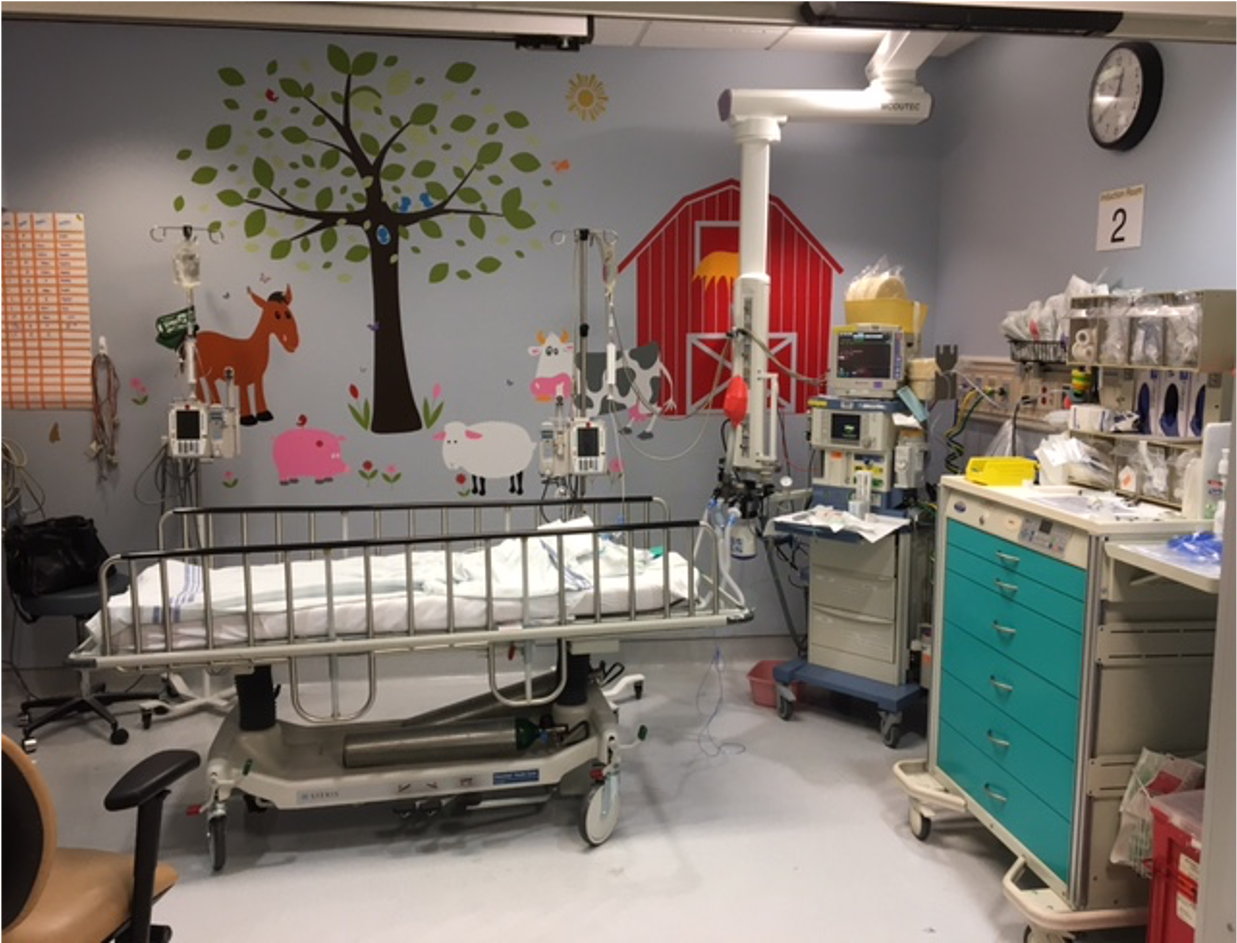Pediatric General Anesthesia for Radiation Treatment
Younger children, children with medically complex cases (posterior fossa syndrome, autism, etc.), or children who get very worried may need general anesthesia for their radiation treatments. This helps them fall asleep so that they can be still during their treatments.
Who gives the anesthesia?
Anesthesia will be given by a pediatric anesthesiologist often with the help of a certified registered nurse anesthetist (CRNA) or a registered nurse (RN). Different members of the anesthesia team may help with your child’s care on different days.
Your child’s care team may include:
- Pediatric Anesthesiologist: A doctor who gives anesthesia to children and adolescents.
- Pediatric Certified Registered Nurse Anesthetist (CRNA): A nurse who helps give anesthesia and works closely with the anesthesiologist.
- Post-Anesthesia Care Nurse: A nurse who has special training in the care of pediatric patients getting anesthesia. They also have experience with pediatric patients with cancer.
- Operating Room Technician: They get the room ready before treatment with general anesthesia equipment and make sure supplies are ready for use.
How is general anesthesia given?
General anesthesia is given through an IV (intravenous) catheter or inhaled through a breathing mask or tube.
If your child is getting general anesthesia, it is important to follow all instructions given to you by your care team. Some of these may start several hours or the night before treatment. Some important things to remember:
- Follow the feeding instructions you have been given by your care team. If your child eats or drinks the morning of treatment, you should tell your care team right away. Your child’s treatment may be moved to a different time or be canceled. This is for the safety of your child.
- Do not use lotions or creams on your child’s skin for the 4 hours before their scheduled treatment time unless told to by your care team.
- Pack some items that your child will find comforting like a favorite stuffed animal, blanket, book, or toy. You may want to pack a bag with snacks and drinks for your child after their treatment is done because they may be hungry and/or thirsty.
The Morning of Treatment
- Tell your care team if your child has taken any medications at home the morning of or the night before treatment.
- If your child has a fever, cold, vomiting, or does not look well, let your anesthesia care team know right away. The anesthesiologist will decide if it is safe for your child to have treatment that day. In certain cases, it is best to cancel treatment for the day. This means the treatment will be added to the end of the treatment schedule. All missed or canceled appointments should be made up.
- If you are running late, please call your anesthesia care team to let them know. General anesthesia is almost always scheduled in the early morning or afternoon.
What to Expect During Treatment
Everyone’s experience is different, but this is generally what will happen during your treatment visit:
- When you arrive for treatment, you will stop at the front desk to check in for the appointment. Many oncology departments have a dedicated waiting room for pediatric patients, but if yours does not you can sit wherever you are comfortable.
- When it is your child's turn for treatment the nurses will get you from the waiting room and check your child’s vital signs (weight, temperature, blood pressure, oxygen, and breathing).
- If your child has a central line, it will likely be accessed on Mondays and remain accessed until after treatment on Friday. If your child does not have a central line, then an intravenous (IV) catheter will be placed.
- Often children are put under anesthesia in an induction room, this is different than the treatment room. Once the child is asleep, they are transported on a stretcher into the treatment room.
- Every oncology department has different rules about if you can be with your child while the anesthesia is given. Most departments allow you to hold your child because it is comforting to them. As soon as the medicine is given, you will be asked to leave the induction room.
- The anesthesia team will monitor your child the whole time they are asleep.
- If you want to see the treatment room where your child will be getting treatment, ask a member of the care team.
- Each day you will be asked to wait in the waiting room during the treatment. No one can be in the treatment room during treatment. Once your child is awake after treatment, you will be able to join them in the recovery room.
- Your child may be sleepy or wake up cranky after anesthesia. This is normal. Once your child is awake, they can eat and drink like normal. You will be able to leave the department shortly after your child wakes up.
The rules for pediatric general anesthesia depend on the treatment center so it is important to be familiar with your oncology department's rules. If you have any questions or concerns, please don’t hesitate to talk to your care team.
